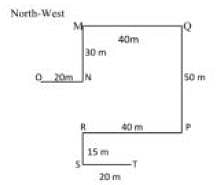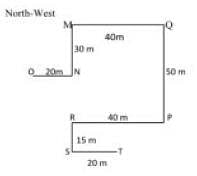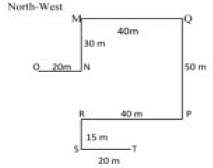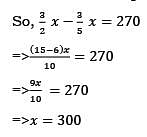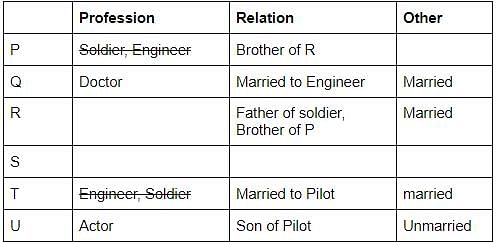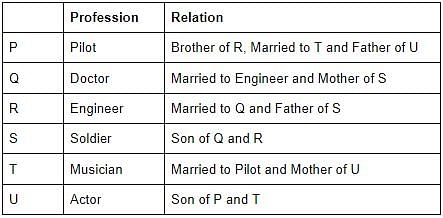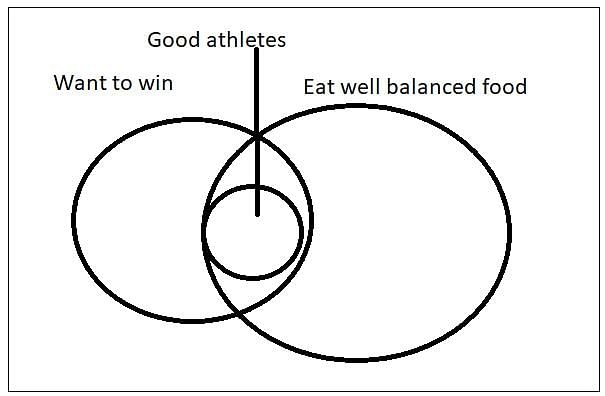APPSC (Arunachal Pradesh) Prelims Paper 2 Mock Test- 10 - APPSC (Arunachal Pradesh) MCQ
30 Questions MCQ Test - APPSC (Arunachal Pradesh) Prelims Paper 2 Mock Test- 10
The norm of anonymity means that the civil servants must work from behind the curtain, without praise or blame. In the word of Mohit Bhattacharya, "Anonymity meant that the civil servant would merely advice the politician from behind and would be protected from being exposed to the din and fury of politics. The norm of anonymity requires that the minister has to answer for the actions of the civil servants working under him in the parliament and thus, protect them from the criticism of the parliamentarians. This implies that the minister assumes total responsibility for the commissions and omissions of the civil servants working under him. The minister runs his department / ministry and is politically responsible for its activities. He is mainly concerned with policy and consults his secretary on policy decisions. It is the Minister who decide which course of action to adopt. He alone would be answerable in the parliament for good and bad results of the policy, not the secretary. Therefore, the norm of anonymity is the counterpart of the principle of ministerial responsibility. In other words, the principle of anonymity goes hand in hand with the principle of ministerial responsibility.
Which among the following is not implied by anonymity in the passage above?
The norm of anonymity means that the civil servants must work from behind the curtain, without praise or blame. In the word of Mohit Bhattacharya, "Anonymity meant that the civil servant would merely advice the politician from behind and would be protected from being exposed to the din and fury of politics. The norm of anonymity requires that the minister has to answer for the actions of the civil servants working under him in the parliament and thus, protect them from the criticism of the parliamentarians. This implies that the minister assumes total responsibility for the commissions and omissions of the civil servants working under him. The minister runs his department / ministry and is politically responsible for its activities. He is mainly concerned with policy and consults his secretary on policy decisions. It is the Minister who decide which course of action to adopt. He alone would be answerable in the parliament for good and bad results of the policy, not the secretary. Therefore, the norm of anonymity is the counterpart of the principle of ministerial responsibility. In other words, the principle of anonymity goes hand in hand with the principle of ministerial responsibility.
What does collective responsibility mean as per the passage above?
The norm of anonymity means that the civil servants must work from behind the curtain, without praise or blame. In the word of Mohit Bhattacharya, "Anonymity meant that the civil servant would merely advice the politician from behind and would be protected from being exposed to the din and fury of politics. The norm of anonymity requires that the minister has to answer for the actions of the civil servants working under him in the parliament and thus, protect them from the criticism of the parliamentarians. This implies that the minister assumes total responsibility for the commissions and omissions of the civil servants working under him. The minister runs his department / ministry and is politically responsible for its activities. He is mainly concerned with policy and consults his secretary on policy decisions. It is the Minister who decide which course of action to adopt. He alone would be answerable in the parliament for good and bad results of the policy, not the secretary. Therefore, the norm of anonymity is the counterpart of the principle of ministerial responsibility. In other words, the principle of anonymity goes hand in hand with the principle of ministerial responsibility.
What, as per the passage, can be said to be the relationship between ‘Anonymity’ and ‘Ministerial
responsibility’.
responsibility’.
Given below is a survey conducted in four cities about people liking different Politicians. The total number of people surveyed was 2018 and they were distributed as given in the chart. The table shows the percentage of people liking the Politicians in that particular city. An individual can have liking for more than one Politician.


Percentage in 4 cities of 2000 peoples surveyed
- Ranchi
- Patna
- Delhi
- Mumbai
Which city has maximum people liking N Kumar in the given survey?
Given below is a survey conducted in four cities about people liking different Politicians. The total number of people surveyed was 2018 and they were distributed as given in the chart. The table shows the percentage of people liking the Politicians in that particular city. An individual can have liking for more than one Politician.
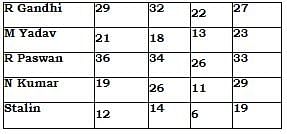

Percentage in 4 cities of 2000 peoples surveyed
- Ranchi
- Patna
- Delhi
- Mumbai
If all the fans of R Paswan also like N Modi in Mumbai, then how many people in Mumbai like N Modi but not R Paswan?
Given below is a survey conducted in four cities about people liking different Politicians. The total number of people surveyed was 2018 and they were distributed as given in the chart. The table shows the percentage of people liking the Politicians in that particular city. An individual can have liking for more than one Politician.
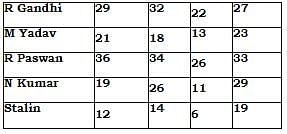
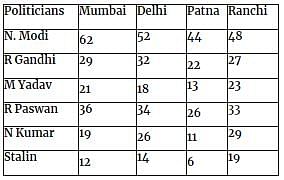
Percentage in 4 cities of 2000 peoples surveyed
- Ranchi
- Patna
- Delhi
- Mumbai
If M yadav and R Gandhi don’t have common fans then how many of the total people surveyed in all the four cities together like neither of them?
Given below is a survey conducted in four cities about people liking different Politicians. The total number of people surveyed was 2018 and they were distributed as given in the chart. The table shows the percentage of people liking the Politicians in that particular city. An individual can have liking for more than one Politician.


Percentage in 4 cities of 2000 peoples surveyed
- Ranchi
- Patna
- Delhi
- Mumbai
What can be the maximum number of people surveyed in Delhi who don’t like any of the above Politicians?
Given below is a survey conducted in four cities about people liking different Politicians. The total number of people surveyed was 2018 and they were distributed as given in the chart. The table shows the percentage of people liking the Politicians in that particular city. An individual can have liking for more than one Politician.


Percentage in 4 cities of 2000 peoples surveyed
- Ranchi
- Patna
- Delhi
- Mumbai
What can be the maximum number of people surveyed in Patna who like all the Politicians given in the table?
Directions: Eight persons M, N, O, P, Q, R, S and T are standing in such a way that O is 20 m apart from N towards West, N is 30 m South with respect to M. M is 40 m towards West with respect to Q. P is 50 m towards South with respect to Q. R is 15 m apart from S towards North. T is 20 m towards East with respect to S. R is 40 m towards West with respect to P.
Q. In which direction is Q standing with respect to R?
Directions: Eight persons M, N, O, P, Q, R, S and T are standing in such a way that O is 20 m apart from N towards West, N is 30 m South with respect to M. M is 40 m towards West with respect to Q. P is 50 m towards South with respect to Q. R is 15 m apart from S towards North. T is 20 m towards East with respect to S. R is 40 m towards West with respect to P.
Q. If one more person U is standing towards South-West with respect to P, then in which direction is T, standing with respect to U?
Directions: Eight persons M, N, O, P, Q, R, S and T are standing in such a way that O is 20 m apart from N towards West, N is 30 m South with respect to M. M is 40 m towards West with respect to Q. P is 50 m towards South with respect to Q. R is 15 m apart from S towards North. T is 20 m towards East with respect to S. R is 40 m towards West with respect to P.
Q. What is the direction of O with respect to S?
One-way governments can decrease air pollution is to impose a tax on industrial carbon dioxide emissions. It is not clear how high taxes imposed on carbon dioxide emissions should be or what its economic and environmental implications would be. At first glance, it is not difficult to estimate roughly the size of the tax needed to effect a given level of emission reduction. One writer estimate, for example, that a tax of 41 percent on the price of coal, 33 percent on oil, and 25 percent on gas would reduce the United Kingdom’s emissions by 20 percent (using 1988as the base year) by the year 2005, the target recommended by the 1988 Toronto Conference. These numbers are based on the assumption that all countries will behave cooperatively in imposing a carbon tax.
Q. According to the passage, the size of the carbon tax levied on a given fuel would vary with the
One-way governments can decrease air pollution is to impose a tax on industrial carbon dioxide emissions. A significant decrease is achieved only when all countries will behave cooperatively in imposing carbon tax. There are very strong reasons to believe that cooperation would be difficult to win. If most countries cooperated, then any country that chose not to cooperate would be advantaged: it would have no abatement costs, and the effect on the environment of its defection would be relatively small. Because of this "free rider" effect, cooperation on a scale needed to reduce carbon dioxide emissions might prove elusive. Should countries act unilaterally to curb emissions? If a country were to act unilaterally, the benefits would be spread across the globe, whereas the costs would fall solely on the country taking the action. The action would reduce emissions globally, and the effect of this would be to reduce the benefit other countries would receive if they reduced emissions. As a consequence, other countries would have less incentive to reduce emissions and would probably emit more carbon dioxide than they would have if the unilateral action had not been taken. The entire effect of the emission reduction may not be lost, but it would surely be diminished by this free-riding behaviour.
Q. Which one of the following is most parallel to the "free rider” effect mentioned in passage?
Directions: These questions are based on the following pie-charts.
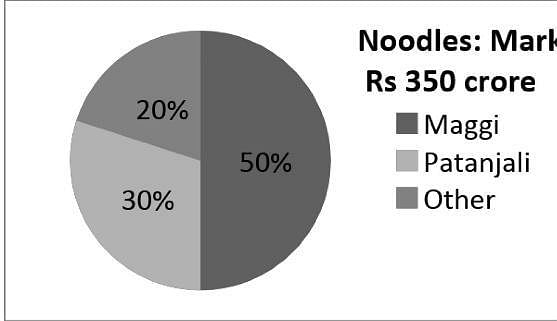
Cheese: Market size 120 crore
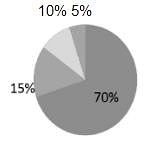
- Amul
- Vadilal
- Mother Dairy
- Other
Q. In the chart of cheese, what is the difference between the central angles formed by Amul and Vadilal?
In a test, Ram was asked to find 3/5 of a number. By mistake, he found 3/2 of it. His answer was 270 more than the correct answer. The given number is:
a, b, c, d and e are five consecutive integers in increasing order of size. Which one of the following expressions is not odd?
Study the following table and answer the question based on it.
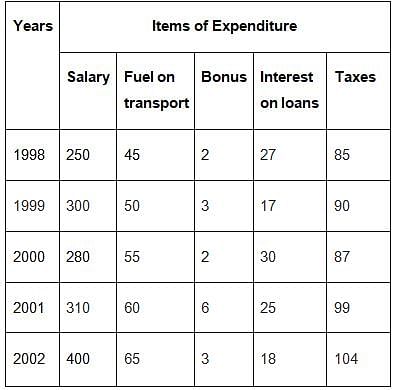
Expenditures of a Company (in Lakh Rupees) per Annum Over the given Years
The total amount of bonus paid by the company during the given period is approximately what percent of the total amount of salary paid during this period?
Study the following table and answer the questions (Q.22 - Q.23) based on it.
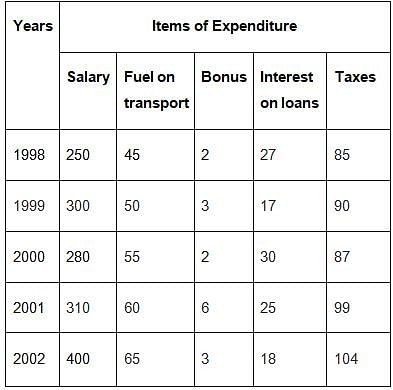
Expenditures of a Company (in Lakh Rupees) per Annum Over the given Years
The ratio between the total expenditure on Taxes for all the years and the total expenditure on Fuel and Transport for all the years respectively is approximate?
Direction: Six members of a family P, Q, R, S, T and U. There are two couples each having one unmarried child in the family. Each has a profession namely Doctor, Musician, Actor, Engineer, Pilot and Soldier not in the same order as written.
1. R is father of Soldier
2. Pilot marries T, who is neither Engineer nor Soldier
3. Q is a doctor and married to an Engineer
4. U, the son of Pilot is an Actor
5. P is neither a soldier nor an Engineer.
6. R and P are brothers
What is the occupation of P?
Direction: Six members of a family P, Q, R, S, T and U. There are two couples each having one unmarried child in the family. Each has a profession namely Doctor, Musician, Actor, Engineer, Pilot and Soldier not in the same order as written.
1. R is father of Soldier
2. Pilot marries T, who is neither Engineer nor Soldier
3. Q is a doctor and married to an Engineer
4. U, the son of Pilot is an Actor
5. P is neither a soldier nor an Engineer.
6. R and P are brothers
T is married to?
Direction: Six members of a family P, Q, R, S, T and U. There are two couples each having one unmarried child in the family. Each has a profession namely Doctor, Musician, Actor, Engineer, Pilot and Soldier not in the same order as written.
1. R is father of Soldier
2. Pilot marries T, who is neither Engineer nor Soldier
3. Q is a doctor and married to an Engineer
4. U, the son of Pilot is an Actor
5. P is neither a soldier nor an Engineer.
6. R and P are brothers
What is the occupation of S?
Directions: The following table shows the marks obtained by 100 students in Mathematics, Science and the average of the two subjects.
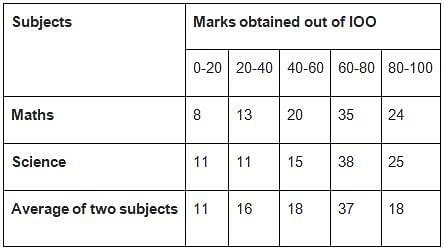
Find the number of students who got 60% or more marks in both subjects.
In the recent Justice as Translation, James Boyd White argues that opinion-writing should be regarded as an act of "translation,” and judges as "translators.” As such, judges find themselves mediating between the authoritative legal text and the pressing legal problem that demands resolution. A judge must essentially “reconstitute” that text by fashioning a new one, which is faithful to the old text but also responsive to and informed by the conditions, constraints, and aspirations of the world in which the new legal problem has arisen.
Which one of the following phrases best describes the meaning of “Re-constitute” used in the passage?
All good athletes want to win and all athletes who want to win eat a well-balanced diet; therefore all athletes who do not eat a well-balanced diet are bad athletes.
The best conclusion from this statement is that
Passage 2
The St. Bartholomew's Day Massacre was a series of Catholic mob violence episodes against members of the French Protestant Reformed Church. On August 24, 1572, Admiral Gaspard de Coligny, the leader of the Protestant Reformed Church, was murdered, and this set of a crime wave that continued for well over one month and spread throughout the French countryside. In all, it is estimated that 50,000 people were killed. The events which transpired in France in August and September of 1572 were the result of many factors, including the Glorious Reformation which had its roots in Germany and because of growing strife within the Catholic Church. However, historians disagree whether the massacre was premeditated, and in fact many now agree that Rome had only a secondary role in the planning and execution of the massacre. However, proponents of the idea that Rome was directly responsible for the massacre refer to the fact that Pope Gregory XIII commissioned the production of a special commemorative medal to honor the massacre of the Protestants.
Q. Which of the following statements would the author most likely disagree with?
Passage 2
The St. Bartholomew's Day Massacre was a series of Catholic mob violence episodes against members of the French Protestant Reformed Church. On August 24, 1572, Admiral Gaspard de Coligny, the leader of the Protestant Reformed Church, was murdered, and this set of a crime wave that continued for well over one month and spread throughout the French countryside. In all, it is estimated that 50,000 people were killed. The events which transpired in France in August and September of 1572 were the result of many factors, including the Glorious Reformation which had its roots in Germany and because of growing strife within the Catholic Church. However, historians disagree whether the massacre was premeditated, and in fact many now agree that Rome had only a secondary role in the planning and execution of the massacre. However, proponents of the idea that Rome was directly responsible for the massacre refer to the fact that Pope Gregory XIII commissioned the production of a special commemorative medal to honor the massacre of the Protestants.
Q. Which of the following best describes the development of the passage?
Passage 1
If I had been asked in my early youth whether I preferred to have dealings only with men or only with books, my answer would certainly have been in favour of books. In later years this has become less and less the case. Not that I have had so much better experiences with men than with books; on the contrary, purely delightful books even now come my way more often than purely delightful men. But the many bad experiences with men have nourished the meadow of my life as the noblest book could not do.
Q. Which one of the following statements best reflects the main argument of the passage?
Passage 1
If I had been asked in my early youth whether I preferred to have dealings only with men or only with books, my answer would certainly have been in favour of books. In later years this has become less and less the case. Not that I have had so much better experiences with men than with books; on the contrary, purely delightful books even now come my way more often than purely delightful men. But the many bad experiences with men have nourished the meadow of my life as the noblest book could not do.
Q. Which one of the pairs of phrases best helps to bring out the metaphorical meaning of ‘the meadow of my life'?
Five bananas and six apples and seven guavas cost Rs 178 and six bananas, four apples and two guavas cost Rs 124. What is cost of one banana, one apple and one guava?
Point which satisfies the inequalities: x - y > 1 and y < 2x - 1



